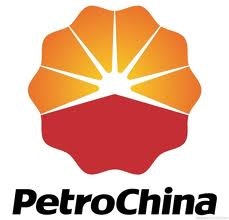According to the latest issue of the IMF’s “World Economic Outlook,” economic growth in the BRIC nations will account for the lion’s share of the global output growth. Some earlier estimates say that the BRIC nations will account for 37% of global growth in the period 2011-2016. While developed economies are expected to accelerate growth to a still-meager 1.5% in 2013 from 1.3% last year, BRIC members China, Brazil, and India are each expected to see robust expansion above the world’s average of 3.6%. For example, in 2013 relative to 2012, the Chinese growth will accelerate to 8.2% from 7.8%, India’s output will increase to 6.0% from 4.9%, and Brazil’s growth will jump to 4.0% from 1.5%. Russia will see a marginal increase in output growth to 3.8% from 3.7%. This trend is likely to be supportive of the performance of the BRIC equities. Barron’s recently posted a bullish call on Brazil and India markets.
While it is best to seek exposure to the BRIC growth through stocks of established companies from developed nations, a direct exposure to the expanding market can be attained through several ADRs listed on the U.S. exchanges. Here is a list of five possible options for a diversified BRIC portfolio of dividend stocks that can provide some safety margin against possible volatility and downside risk. Still, investors should be aware of the exceptionally high risk associated with investing in emerging market stocks, including withholding taxes as well as currency and political risks.

Sterlite Industries India Limited (NYSE:SLT) is an Indian non-ferrous metals mining company, engaged in copper production. Its dividend yields 1.8% on a payout ratio of only 17%. Stronger BRIC growth, and especially the rebounding demand in China, will fuel copper consumption, which is expected to rise 4% annually for the next couple of years. This growth will likely support copper pricing and may be a positive catalyst for Sterlite Industries in 2013-2014. According to Business Standard, in the company’s latest quarter, “strong production and sales volumes of silver, lead and copper and commercial power sales from Sterlite Energy Ltd. helped the company post higher revenues.” Still, analysts forecast contracting EPS growth for the company, on average, for the next five years. SLT’s forward P/E is only 6.7x, well below historical metrics, while its PEG is 0.6. This stock may be considered good value, as it is trading at a price-to-book of 0.92 and a price-to-sales of 0.95. However, the company is exposed to significant foreign exchange risks, which often add to or subtract from its growth. Last quarter, Jim Simons’ RenTech boosted its small stake in the company, while Mount Kellett Capital reduced its position by 26%.





